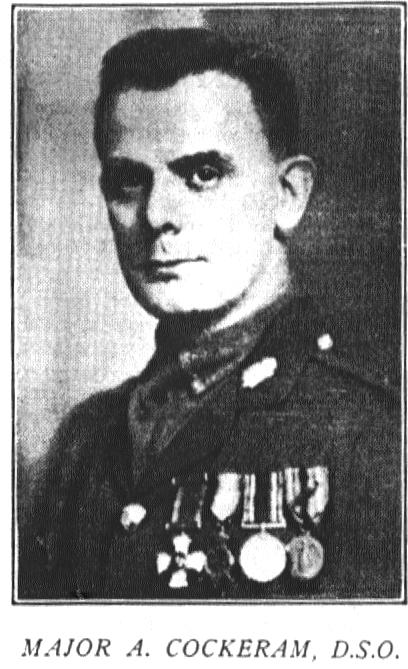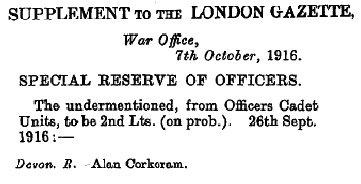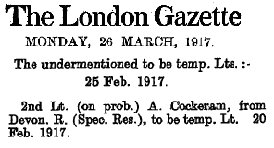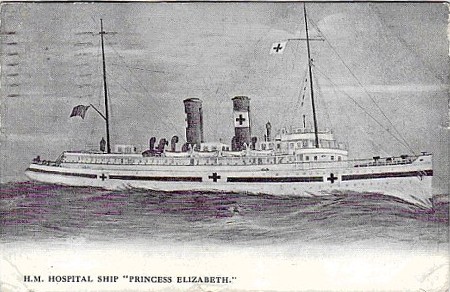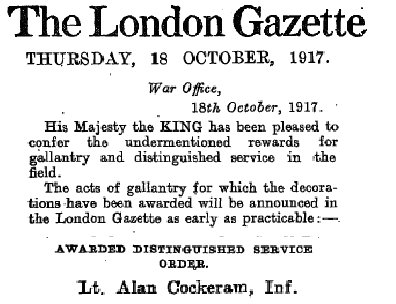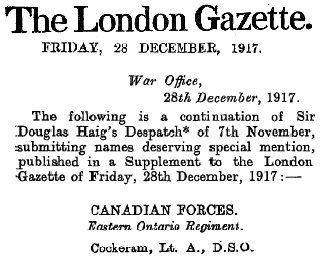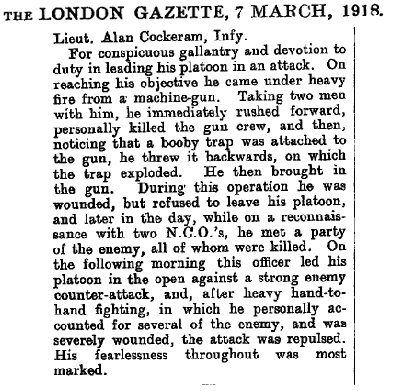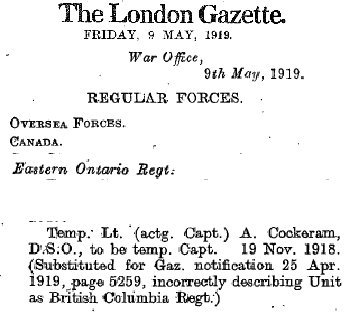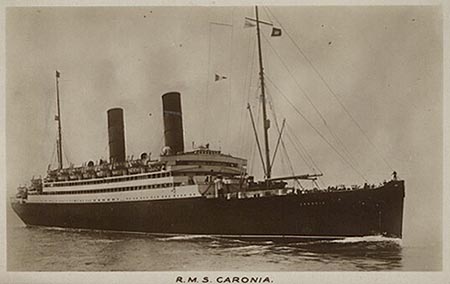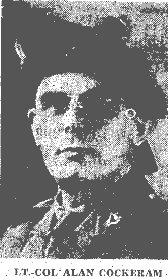|
Alan Cockeram
|
||||||||||||||||||||||||||||||||||||||||||||||||||||||||||||||||||||||||||||||||||||||||||||||||||||||||||||||||||||||||||||||||||||||||||||||
|
|
||||||||||||||||||||||||||||||||||||||||||||||||||||||||||||||||||||||||||||||||||||||||||||||||||||||||||||||||||||||||||||||||||||||||||||||
|
|
||||||||||||||||||||||||||||||||||||||||||||||||||||||||||||||||||||||||||||||||||||||||||||||||||||||||||||||||||||||||||||||||||||||||||||||
|
Toronto
Daily Star July 25, 1940 COCKERAM, DSO, NEARLY VC, FOR BATTLEFIELD BRAVERY Wiped Out Gun Crew One
Day—In Hand-to Hand Fight the Next RECRUITS THE IRISH
By GORDON SINCLAIR
Of the 245 seats in Canada’s House of Commons, one is held by a woman, one by
an officer serving overseas, and eight by officers who are mobilized but not yet abroad.
Of these nine statesmen in khaki, only one commands a battalion, and that one not
only commands one battalion but is second in command of another.
Before this month ends, this colonel will resign his command and take major’s
rank and pay as second in command, because the unit where he is second is on the active
list and the other is not.
Step up then folks and meet Lt-Col Alan Cockeram, DSO, who holds two of the biggest
military jobs in Toronto……and one in Ottawa.
The colonel is at present commander of the second battalion, Toronto Irish
Regiment, and second in command of the Toronto Irish Regiment in the Canadian Active
Service Force…..and when people call him “cocky” it’s not altogether a
nickname. It might be a pretty good
description.
In civil life Alan Cockeram is a mine executive and his growling laugh has been
heard up and down the north woods from the Arctic circle to here and back again.
Yesterday we had to confess that the commander of the Irish Regiment, Lieut-Col HB
Duthie, was not Irish, but a Scotch Canadian. Now
it’s horrible to repeat that the second in command is English; straight English, with
no Irish mingled in at all. D’Arcy Hinds
must be blushing.
Alan Cockeram was born in Topsham Devonshire, came to Canada in 1913 and
immediately joined the Canadian Bank of Commerce at Bloor and Yonge. The next year…the fateful year of
1914…Cockeram was transferred to Brockville and there he got a commission in the 41st
Brockville Rifles, a unit still in existence but not yet mobilized. Enlisted as a Private
That commission came along in midsummer, a few weeks before the outbreak of war,
and just as soon as war did come, Cockeram chucked it up and enlisted in the 21st
battalion (Kingston), as a private.
Cockeram quit the commission because that was the quickest way of getting overseas
and he did get overseas in May 1915. Four
months later the battalion was ordered to France and through the ranks came the colonel to
order that Cockeram stay behind and study for a commission.
He refused. Maybe that was mutiny or
treason or what not, but anyhow Cockeram said he didn’t want a commission because
that meant delay in getting into the big show and delay was the one thing he couldn’t
tolerate.
“If I am alive six months from now I’ll apply for leave to study for a
commission,” he said by way of compromise.
He actually waited seven months, was just as lively as he is now…if not more
so… and went back for that commission in April ’15. By the end of August Second Lieutenant Alan
Cockeram was back in France with the First Devonshire Regiment, but the 21st
didn’t like that a little bit. They
complained that one their bright young men had been hijacked and it was time he came back
home.
“But Cockeram is an Englishman” somebody said. “so what…we saw him first.” Cockeram returned to Canada’s 21st
Battalion in February 1917, and at both Vimy Ridge and Hill 70 things began to pop for
both himself and the outfit. How He Won the DSO
If this war has proved nothing else, it has established that the best you can get
is the worst of it when asking an officer how won his medals. It’s known that Cockeram was recommended for
the Victoria Cross, but wound up with the Distinguished Service Order, and the citation
for that order follows:
“To Lieut Alan Cockeram, 21st Battalion, Canadian Expeditionary
Force, for conspicuous gallantry and devotion to duty in leading his platoon in an attack. On reaching his objective he came under heavy fire
from a machine gun. Taking two men with him,
he immediately rushed forward, personally killed the gun crew and then noticing that a
booby trap was attached to the gun, he threw it backwards, on which the trap exploded (a
booby trap is a bomb left to catch the unwary). During
this operation Cockeram was wounded but refused to leave his platoon. Later in the day while on reconnaissance with two
non commissioned officers, he met a party of the enemy, all of whom were killed.
On the following morning this officer led his platoon in the open against a strong
enemy counter-attack and after hand-to-hand fighting in which he personally accounted for
several of the enemy, he was severely wounded. (A
bomb hit him in the face). The attack was
repulsed. Cockeram’s fearlessness
throughout was most marked.”
So that’s the way it all reads in the King’s records…but it would be
fun to hear the colonel say it in his won way.
Later during the war Cockeram was wounded again and mentioned in dispatches. He was demobilized as captain, and company
commander in May 1919, and except for acting as staff captain to the infantry brigade
headed by Col HJ Dawson of Kingston, Cockeram had no further military connection until
1929.
The Irish Regiment claimed him at that tiem as major and company commander. This fighting regiment, war born and with the
swank motto in Garlic “We clear the way,” had been dormant 10 years. Reverts in Ranks Again
When it was reorganized, Cockeram went in immediately, but was about to retire in
1936 when the commander, Lieut-Col WH Stanley, MC, was killed by a Toronto street car. Cockeram took over the regiment with the rank of
lieutenant-colonel. He was succeeded by the
present commander, Lieut-Col Duthie in 1938, and put in charge of the reserve battalion.
As soon as war came along Col Cockeram hollered to get in…but fast. He reverted in rank to major to become second in
command and when the order recently came to raise a new battalion, Cockeram was the man to
do it.
Already he has his officer personnel pretty well lined up and more than 200 men
have been signed on. In connection with this
battalion, Cockeram runs the show…and we mean runs it.
He has the appointments under his personal control…all of them. Among other things he suggested Lieut-Col LH
Nelles, DSO, to succeed him in command and this change will be effected Monday.
We asked the colonel about ambition. What
did he aim to do with this battalion? What
did he aim to do about himself?
“For the battalion I want…and I’ll get…a unit any man can be
proud of. I want to recruit, train and equip
this unit in kilts and then turn it over, intact and in good spirit, to my successor. Then I want to go back to the original
battalion.”
A tall order but the odds are 20 to one it will be accomplished by Thanksgiving
day, or sooner. |
||||||||||||||||||||||||||||||||||||||||||||||||||||||||||||||||||||||||||||||||||||||||||||||||||||||||||||||||||||||||||||||||||||||||||||||
